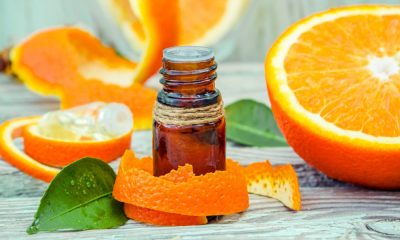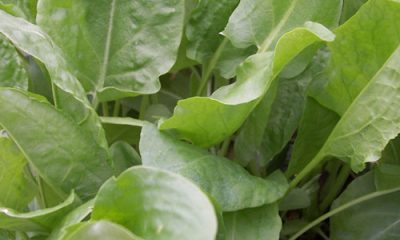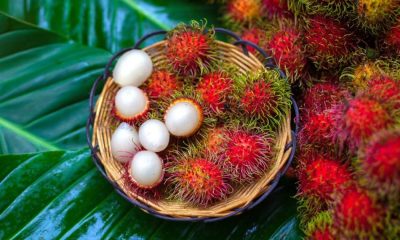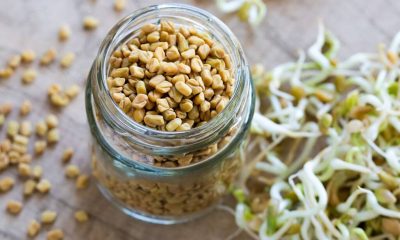Health
Benefits of almond milk for skin

Discover the benefits of almond milk for the skin.
Did you know that almond milk provides us with omega 3 fatty acids and antioxidants that help us protect the skin against sun damage and environmental toxins?
Almond milk is one of the vegetable drinks that has gained fame throughout the world for its high content of essential nutrients that, when absorbed, provide many benefits to the body.
Low in calories and free of cholesterol and lactose, it has become one of the best supplements to lose weight and improve health, especially when there is a risk of cardiovascular disease.
However, beyond this, it also acts as a natural cosmetic, providing interesting benefits to the skin, especially when it has some imperfections.
It contains omega 3 fatty acids, vitamin E and other powerful antioxidants that, in addition to regulating the pH, provide a protective effect against the sun’s rays and toxins.
In addition, it can be combined with other healthy ingredients to prepare beauty treatments without having to invest too much.
In the following space, we want to share 5 good options so that you do not hesitate to try them within your routine.
1. Treatment to reduce dark circles based on almond milk
The omega 3 fatty acids and vitamin E contained in almond milk have an anti-inflammatory and moisturizing effect that favors the reduction of puffiness and dark circles.
Its daily use eliminates dark spots around the eyes and helps to give it a rejuvenated appearance.
Ingredients
•4 tablespoons of almond milk (40 ml)
•1 teaspoon of rose water (5 ml)
Preparation
•Combine almond milk with rose water for a natural toner.
•Dip a piece of cotton in the liquid and rub it on the dark circles under the eyes with gentle massages.
•Let it absorb well and remove excess with a clean cloth.
•Repeat its use every day, before starting the makeup routine.
2. Mask to exfoliate the skin
By combining the properties of almond milk with natural ingredients such as oatmeal and honey, we obtain an exfoliating cream that helps us remove dead cells and impurities from the face.
Ingredients
•6 tablespoons of almond milk (60 ml)
•1 tablespoon of oatmeal (10 g)
•1 tablespoon of honey (25 g)
Preparation
•Put all the ingredients in a bowl and mix them until you get a thick paste.
•Cleanse the face well and then spread the product with gentle circular movements.
•Let the compounds act for 20 minutes and rinse.
•Repeat the treatment 2 times a week.
3. Natural makeup remover
One of the little-known uses of almond milk in terms of facial care is its ability to replace creams to remove makeup.
Its properties facilitate the removal of cosmetics and, unlike chemical products, provide extra nutrition to the skin.
Ingredients
•6 tablespoons of almond milk (60 ml)
•1 teaspoon of vegetable oil (5 g)
Preparation
•Combine the tablespoons of almond oil with a teaspoon of vegetable oil, it can be olive or coconut, to facilitate makeup removal.
•Take a clean cloth, dip it in the product and gently rub it to remove the cosmetics.
•Repeat its use every night before going to sleep.
4. Pore Cleansing Lotion
The astringent and anti-inflammatory action of almond milk makes it a good solution for cleaning clogged and enlarged pores.
Combined with a little tea tree oil, we obtain a natural lotion to balance oil production and remove blackheads.
Ingredients
•6 tablespoons of almond milk (60 ml)
•3 drops of tea tree essential oil
Preparation
•Add the tea tree oil to the almond milk and, after combining it, rub it on the skin with the help of a cotton ball.
•Wait for it to be absorbed well and remove the excesses with a damp cloth.
•Repeat its use every day, twice a day if you have oily skin.
5. Anti-wrinkle mask
The essential nutrients contained in this ingredient, especially its antioxidants, help prevent premature signs of aging by promoting the production of collagen and elastin.
Its absorption minimizes the negative effects of free radicals and, incidentally, nourishes the delicate skin where expression lines are formed.
Ingredients
•6 tablespoons of almond milk (60 ml)
•1 tablespoon of turmeric powder (10 g)
•4 tablespoons of honey (100 g)
Preparation
•Put the almond milk and turmeric in a container and mix until you get a homogeneous product.
•Next, add the honey, continue mixing, and, after obtaining a paste, spread it on the skin.
•Be sure to cover any wrinkle-sensitive areas, including the neck and décolletage.
•Wait for it to act for 30 minutes and rinse.
•Repeat your application 3 times a week.
As you can see, there are very interesting ways to turn almond milk into an ally for the beauty of the skin.
Dare to try these treatments and check that you do not need to spend too much money to pamper yourself.
Health
7 Benefits of cashew nuts and side effects
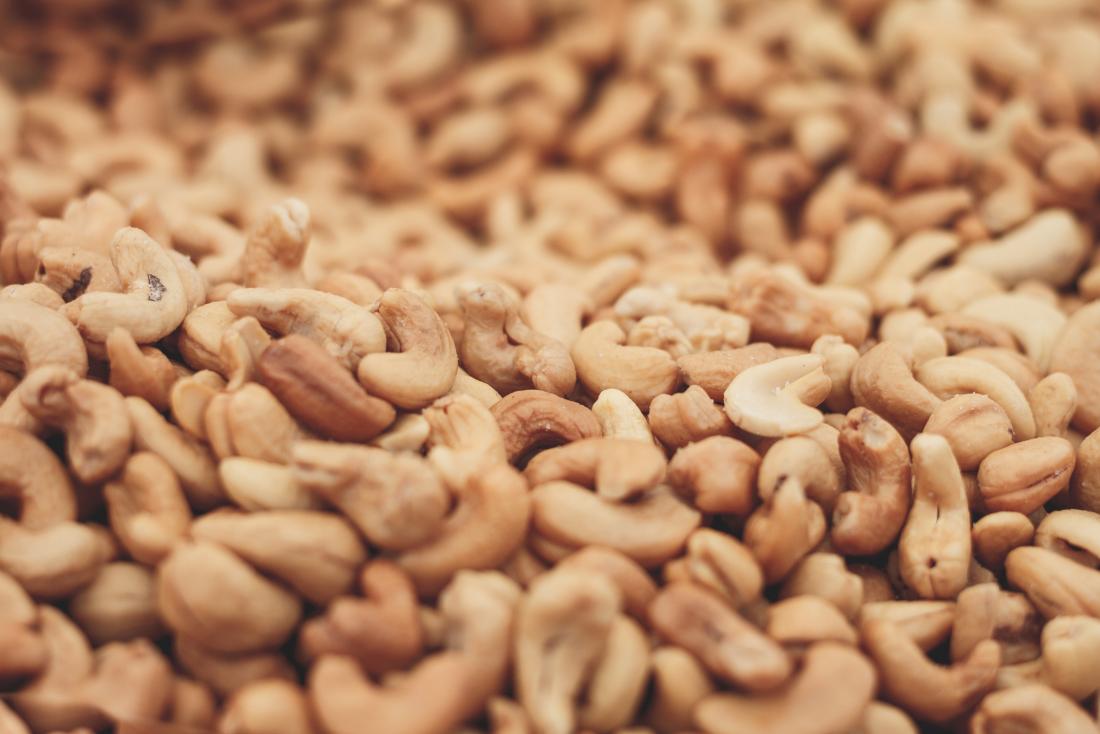
Table of Contents
Health
Cascara sagrada: origin, benefits and possible risks
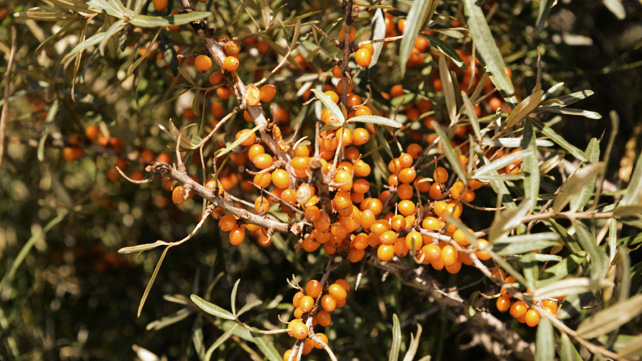
Table of Contents
Health
Sore feet? Grandmother’s Remedy To Instantly Relieve Them

Table of Contents
- What you need
- How to do
- Results
- Why does it work?
- Discover Grandmother’s Remedy To Instantly Relieve sore feet.
After a long day, the feet are sore and swollen …
Especially if it’s hot and you’re wearing heels …
And what about their condition after a long walk?
Fortunately, there is a super-effective grandma’s trick to soothe and instantly deflate feet.
The natural remedy is to take an apple cider vinegar and salt foot bath. Look, it’s very simple:
What you need
- 2 glasses of cider vinegar
- salt
- Hot water
- basin
How to do
- Heat the water.
- Pour the water into the basin.
- Add the apple cider vinegar.
- Add a good handful of salt.
- Immerse your feet in it for 15 min.
- Take your feet out and let them air dry without wiping them.
Results
And There you go! Thanks to this grandmother’s remedy, your feet deflated in just a few minutes 🙂
Easy, fast, and economical, isn’t it?
No more sore feet after a hard day!
Thanks to this trick, you know how to deflate the feet.
And the pain will subside as it goes.
If you have swollen ankles, this foot bath will do you good too.
Take this bath regularly.
Because not only it refreshes and relaxes the feet, but in addition, they will deflate quickly.
You will finally relieve your foot pain quickly!
Considering the price of apple cider vinegar, be aware that you can also use white vinegar instead of apple cider vinegar.
Why does it work?
The action of hot water and apple cider vinegar soothes and rests the feet.
This allows them to deflate quite naturally.
Apple cider vinegar also purifies the skin, which limits odor and perspiration.
Burning feet syndrome
This grandmother’s remedy can also soothe the burning sensation under the soles of the feet.
If you have burning feet, try this apple cider vinegar foot bath.
But be careful, do not put hot water in your foot bath, but cold water.
It will partly calm the feeling of heating that you feel under the foot.
In this case, do not prolong your foot bath for more than 5 minutes
-

 Benefits4 months ago
Benefits4 months agoThe Benefits of Joining Gym Lumolog – Improve Your Fitness & Health
-
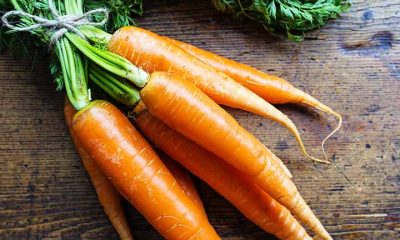
 Food1 year ago
Food1 year ago10 + Benefits of carrot juice and side effects
-

 Health1 year ago
Health1 year ago50 Super Healthy (And Very Often Cheap) Foods
-

 Health1 year ago
Health1 year ago5 Shocking health benefits of kinkeliba and side effects
-
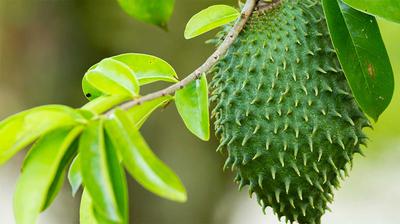
 Health1 year ago
Health1 year ago15 health benefits of soursop leaves tea and side effects
-

 Food1 year ago
Food1 year ago8 shocking benefits of leek juice and side effects
-

 Health1 year ago
Health1 year ago15 Benefits of lipton tea and side effects
-
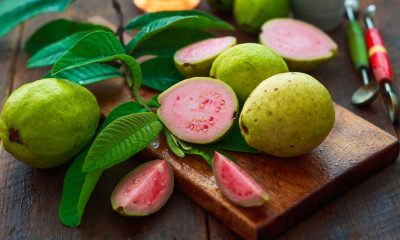
 Health1 year ago
Health1 year agoBenefits of guava leaves Sensually

